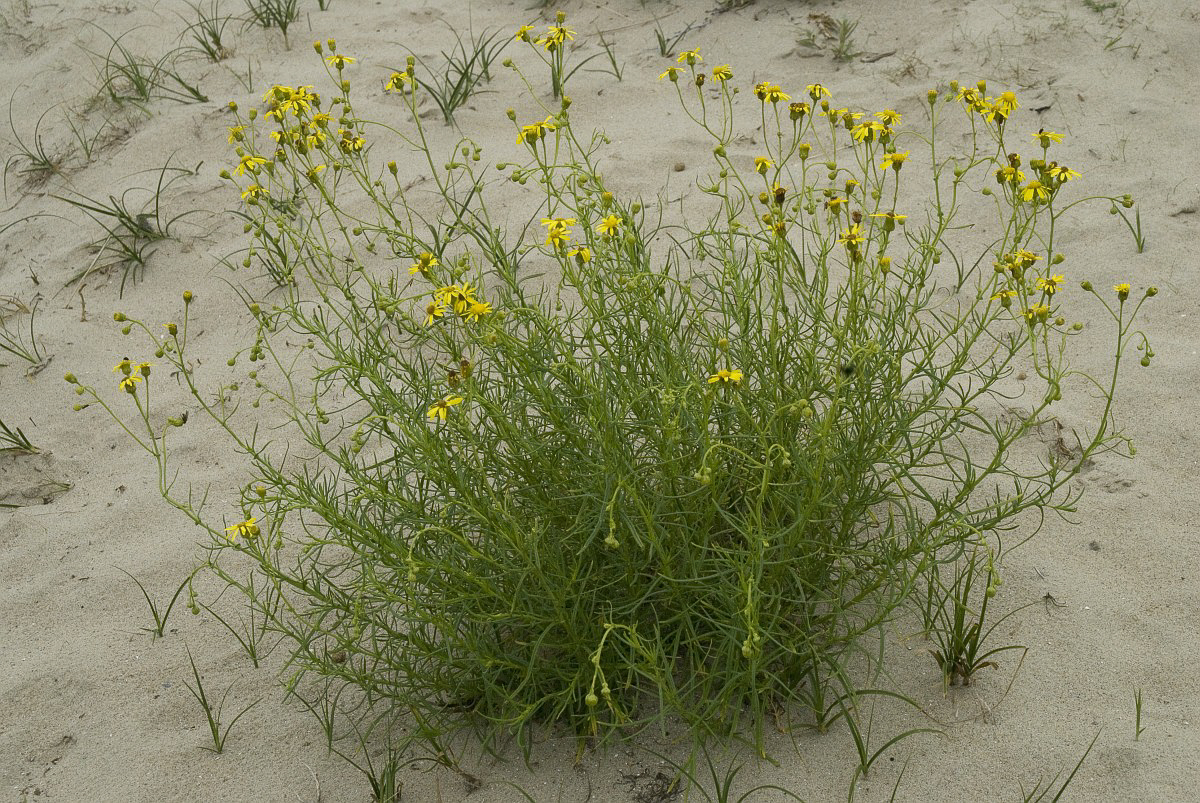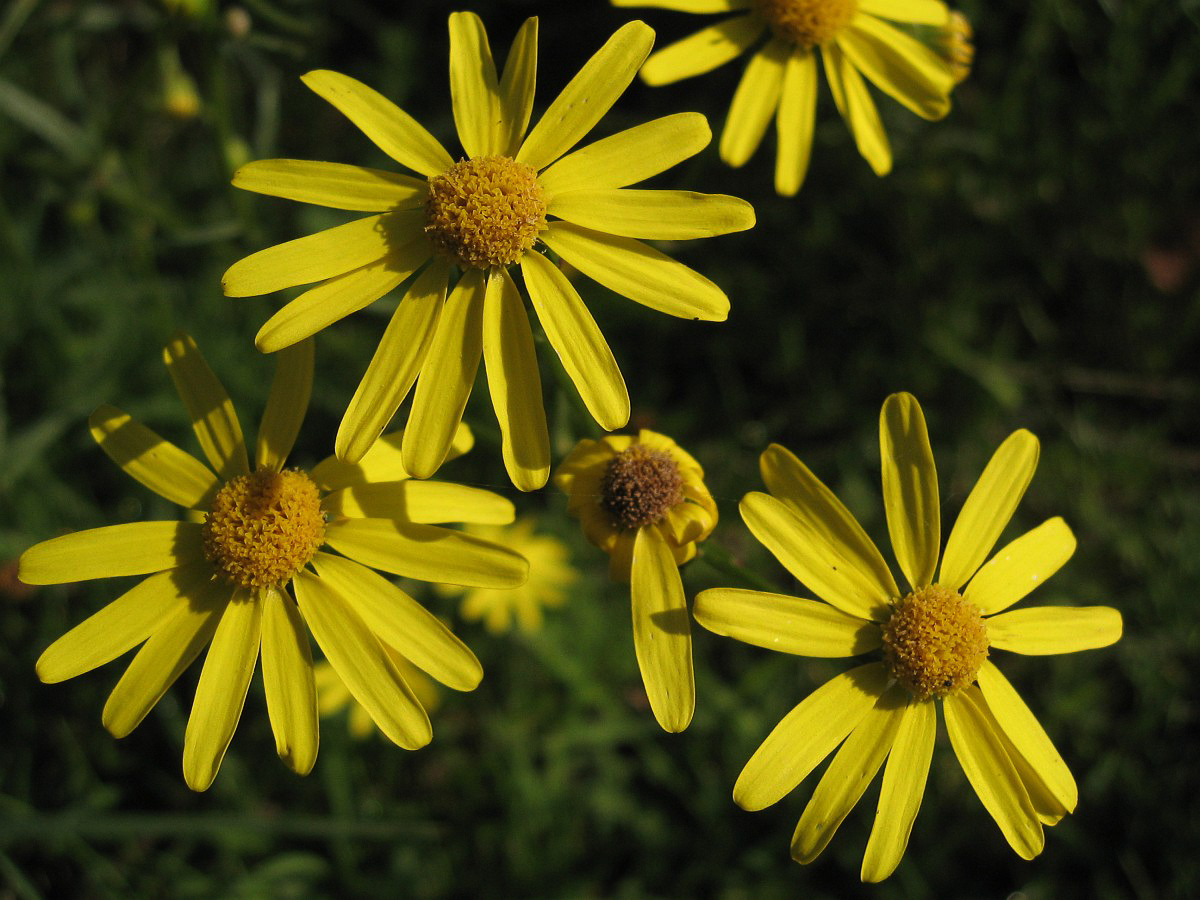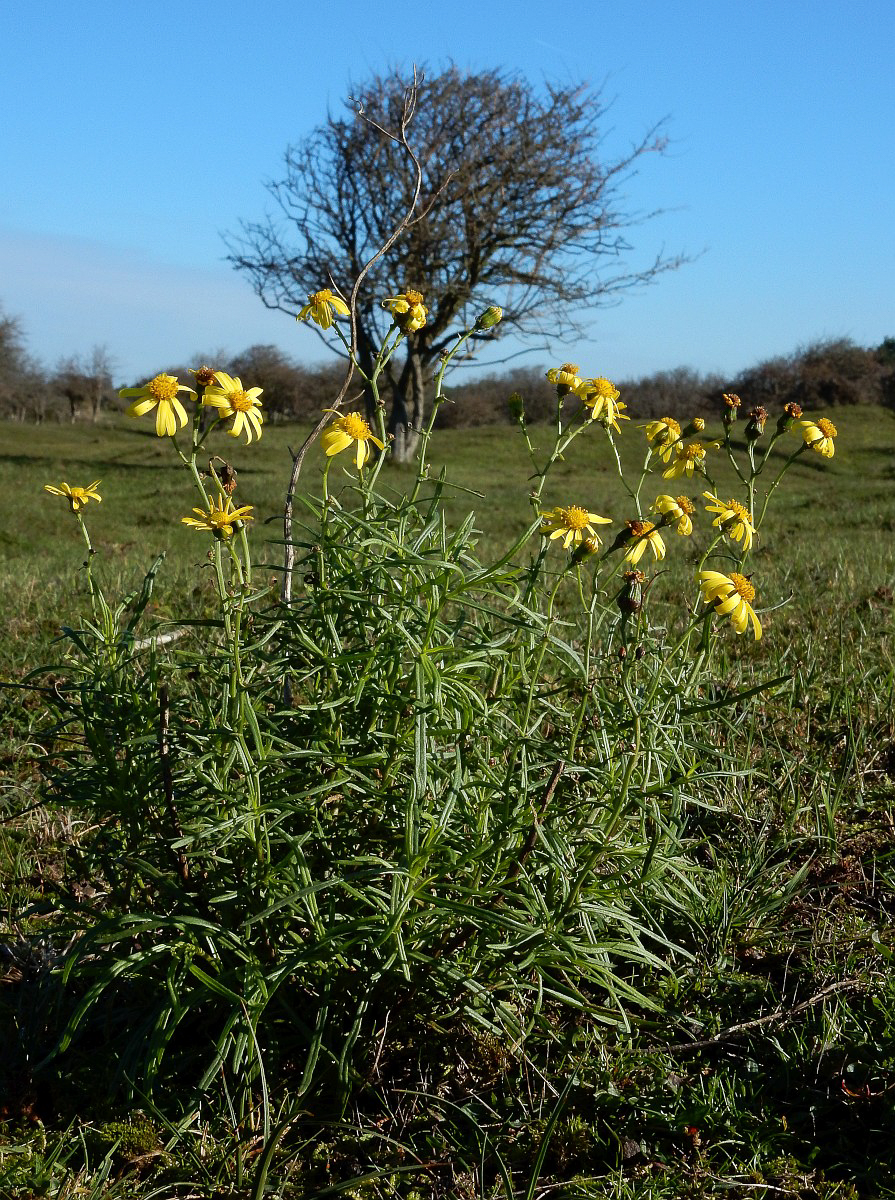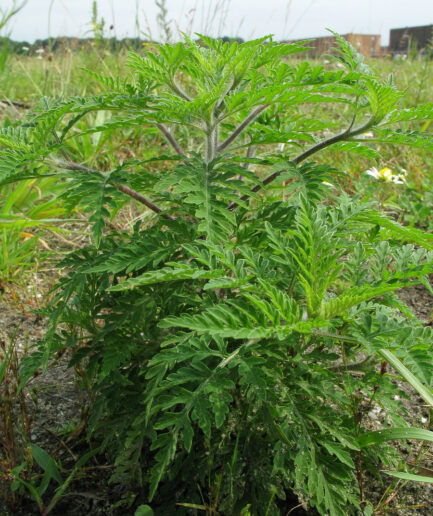South African Ragwort
Scientific name: Senecio inaequidens DC.
Family: Asteraceae
MORPHOLOGY
Habit and Size: Perennial, herbaceous plant, highly invasive, with shallow roots, ranging from 30 to 100 cm in height.
Stem: Woody at the base, striated, and branched.
Leaves: Alternate, glabrous, lanceolate-linear leaves, 3-10 cm long and 3-4 mm wide, with an acute apex, keeled, entire or irregularly toothed margins, a prominent midrib, and the upper leaves are shortly petiolate, subsessile, or sessile.
Flowers: Flowers are in irregular corymbs, with yellow flower heads nodding before anthesis. Peripheral flowers are ligulate, central ones are tubular, with bracts brown at the tip, arranged in a primary row of about 21, with a few outer bracts, 10-12 shorter, purplish ones. Blooms from May to December.
Fruits and Seeds: The fruits are cylindrical achenes, 3 mm long, pubescent, whitish and silky, topped with a pappus.
DISTRIBUTION AND HABITAT
An invasive alien species spread throughout Italy in virtually any habitat from sea level to over 1,800 m.
INTERESTING FACTS
This species, toxic to livestock, reduces the value of grazing areas and significantly alters the landscape by homogenizing it. Originating from South Africa, it was introduced through seeds transported in the wool of animals used in the wool industry, and it has rapidly spread across much of Europe. Each plant develops 80-100 inflorescences and can produce up to 10,000 seeds annually. The achenes, if kept in a dry environment, can remain viable for at least two years. The plant adapts easily to different climatic conditions and is indifferent to the substrate. These characteristics favor its survival and expansion. The achenes are primarily dispersed by the wind but also by birds and mammals.
Photo: licensed free of charge from Saxifraga and Willem van Kruijsbergen, Rutger Barendse, Ed Stikvoort





















